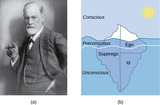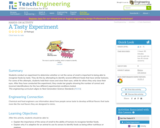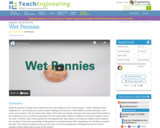
This chapter covers:Why is Research Important?Approaches to ResearchAnalyzing FindingsEthicsFor more information, visit OpenStax College.
- Subject:
- Psychology
- Social Science
- Material Type:
- Module
- Author:
- OpenStax College
- Date Added:
- 07/18/2021

This chapter covers:Why is Research Important?Approaches to ResearchAnalyzing FindingsEthicsFor more information, visit OpenStax College.

By the end of this section, you will be able to:Explain how scientific research addresses questions about behaviorDiscuss how scientific research guides public policyAppreciate how scientific research can be important in making personal decisions

Through two lessons and their associated activities, students do the work of scientists by designing their own experiments to answer questions they generate. Through a simple activity involving surface tension, students learn what a hypothesis isâand isn'tâand why generating a hypothesis is an important aspect of the scientific method. In the second activity, with bubble gum to capture their interest, students learn to design and conduct controlled experiments to answer their own questions about the amounts of sugar (or artificial sweetener) in bubble or chewing gum.

Students take an in-depth look at what goes into planning a research project, which prepares them to take the lead on their own projects. Examining a case study, students first practice planning a research project that compares traditional cook stoves to improved cook stoves for use in the developing world. Then they compare their plans to one used in the real-world by professional researchers, gaining perspective and details on the thought and planning that goes into good research work. Then students are provided with example materials, a blank template and support to take them from brainstorming to completing a detailed research plan for their own air quality research projects. Conducting students’ AQ-IQ research studies requires additional time and equipment beyond this planning activity. Then after the data is collected and analyzed, teams interpret the data and present summary research posters by conducting the next associated activity Numerous student handouts and a PowerPoint® presentation are provided.

Students conduct an experiment to determine whether or not the sense of smell is important to being able to recognize foods by taste. They do this by attempting to identify several different foods that have similar textures. For some of the attempts, students hold their noses and close their eyes, while for others they only close their eyes. After they have conducted the experiment, they create bar graphs showing the number of correct and incorrect identifications for the two different experimental conditions tested.

Students conduct a simple test to determine how many drops of each of three liquids water, rubbing alcohol, vegetable oil can be placed on a penny before spilling over. Because of their different surface tensions, more water can be piled on top of a penny than either of the other two liquids. However, the main point of the activity is for students to come up with an explanation for their observations about the different amounts of liquids a penny can hold. To do this, they create hypotheses that explain their observations, and because middle school students are not likely to have prior knowledge of the property of surface tension, their hypotheses are not likely to include this idea. Then they are asked to come up with ways to test their hypotheses, although they do not need to actually conduct these tests as part of this activity.